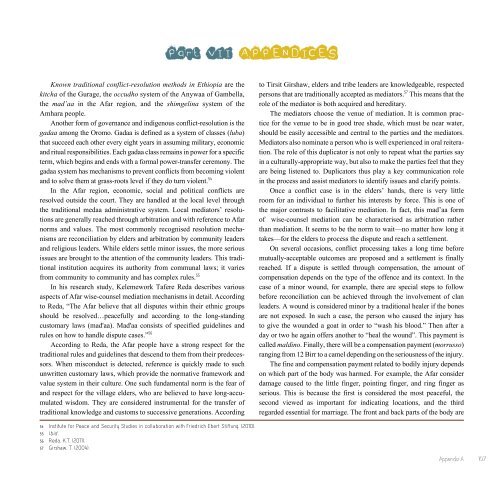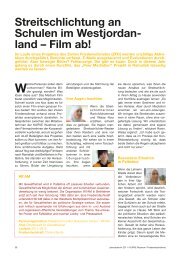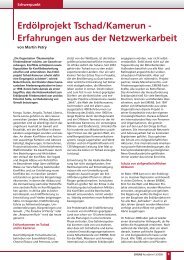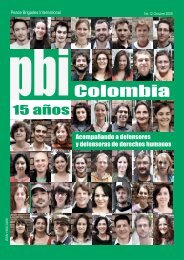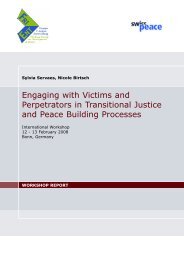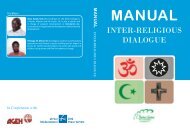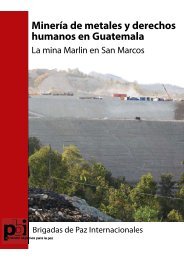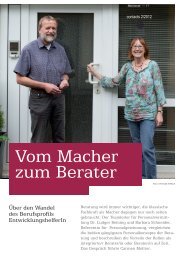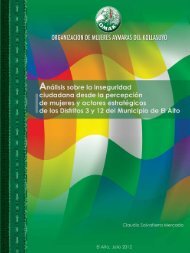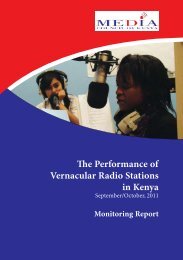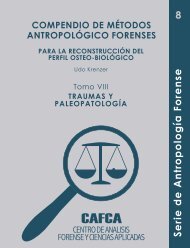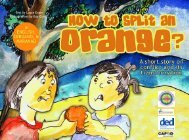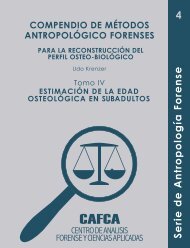Merging Ethiopian Wise-Counsel Mediation and Facilitative ...
Merging Ethiopian Wise-Counsel Mediation and Facilitative ...
Merging Ethiopian Wise-Counsel Mediation and Facilitative ...
- No tags were found...
Create successful ePaper yourself
Turn your PDF publications into a flip-book with our unique Google optimized e-Paper software.
Part VII APPENDICESKnown traditional conflict-resolution methods in Ethiopia are thekitcha of the Gurage, the occudho system of the Anywaa of Gambella,the mad’aa in the Afar region, <strong>and</strong> the shimgelina system of theAmhara people.Another form of governance <strong>and</strong> indigenous conflict-resolution is thegadaa among the Oromo. Gadaa is defined as a system of classes (luba)that succeed each other every eight years in assuming military, economic<strong>and</strong> ritual responsibilities. Each gadaa class remains in power for a specificterm, which begins <strong>and</strong> ends with a formal power-transfer ceremony. Thegadaa system has mechanisms to prevent conflicts from becoming violent<strong>and</strong> to solve them at grass-roots level if they do turn violent. 54In the Afar region, economic, social <strong>and</strong> political conflicts areresolved outside the court. They are h<strong>and</strong>led at the local level throughthe traditional medaa administrative system. Local mediators’ resolutionsare generally reached through arbitration <strong>and</strong> with reference to Afarnorms <strong>and</strong> values. The most commonly recognised resolution mechanismsare reconciliation by elders <strong>and</strong> arbitration by community leaders<strong>and</strong> religious leaders. While elders settle minor issues, the more seriousissues are brought to the attention of the community leaders. This traditionalinstitution acquires its authority from communal laws; it variesfrom community to community <strong>and</strong> has complex rules. 55In his research study, Kelemework Tafere Reda describes variousaspects of Afar wise-counsel mediation mechanisms in detail. Accordingto Reda, “The Afar believe that all disputes within their ethnic groupsshould be resolved…peacefully <strong>and</strong> according to the long-st<strong>and</strong>ingcustomary laws (mad'aa). Mad'aa consists of specified guidelines <strong>and</strong>rules on how to h<strong>and</strong>le dispute cases.” 56According to Reda, the Afar people have a strong respect for thetraditional rules <strong>and</strong> guidelines that descend to them from their predecessors.When misconduct is detected, reference is quickly made to suchunwritten customary laws, which provide the normative framework <strong>and</strong>value system in their culture. One such fundamental norm is the fear of<strong>and</strong> respect for the village elders, who are believed to have long-accumulatedwisdom. They are considered instrumental for the transfer oftraditional knowledge <strong>and</strong> customs to successive generations. According54 Institute for Peace <strong>and</strong> Security Studies in collaboration with Friedrich Ebert Stiftung. (2010).55 Ibid.56 Reda, K.T. (2011).57 Girshaw, T. (2004).to Tirsit Girshaw, elders <strong>and</strong> tribe leaders are knowledgeable, respectedpersons that are traditionally accepted as mediators. 57 This means that therole of the mediator is both acquired <strong>and</strong> hereditary.The mediators choose the venue of mediation. It is common practicefor the venue to be in good tree shade, which must be near water,should be easily accessible <strong>and</strong> central to the parties <strong>and</strong> the mediators.Mediators also nominate a person who is well experienced in oral reiteration.The role of this duplicator is not only to repeat what the parties sayin a culturally-appropriate way, but also to make the parties feel that theyare being listened to. Duplicators thus play a key communication rolein the process <strong>and</strong> assist mediators to identify issues <strong>and</strong> clarify points.Once a conflict case is in the elders’ h<strong>and</strong>s, there is very littleroom for an individual to further his interests by force. This is one ofthe major contrasts to facilitative mediation. In fact, this mad’aa formof wise-counsel mediation can be characterised as arbitration ratherthan mediation. It seems to be the norm to wait—no matter how long ittakes—for the elders to process the dispute <strong>and</strong> reach a settlement.On several occasions, conflict processing takes a long time beforemutually-acceptable outcomes are proposed <strong>and</strong> a settlement is finallyreached. If a dispute is settled through compensation, the amount ofcompensation depends on the type of the offence <strong>and</strong> its context. In thecase of a minor wound, for example, there are special steps to followbefore reconciliation can be achieved through the involvement of clanleaders. A wound is considered minor by a traditional healer if the bonesare not exposed. In such a case, the person who caused the injury hasto give the wounded a goat in order to “wash his blood.” Then after aday or two he again offers another to “heal the wound”. This payment iscalled maldino. Finally, there will be a compensation payment (morrusso)ranging from 12 Birr to a camel depending on the seriousness of the injury.The fine <strong>and</strong> compensation payment related to bodily injury dependson which part of the body was harmed. For example, the Afar considerdamage caused to the little finger, pointing finger, <strong>and</strong> ring finger asserious. This is because the first is considered the most peaceful, thesecond viewed as important for indicating locations, <strong>and</strong> the thirdregarded essential for marriage. The front <strong>and</strong> back parts of the body areAppendix A107


